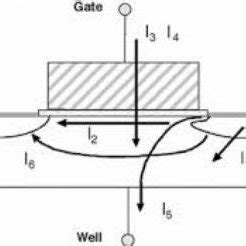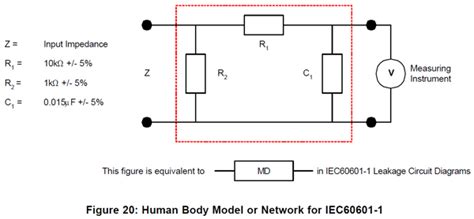Understanding PCB Leakage Current
What is Leakage Current?
Leakage current refers to the small, unintended current that flows through the insulating materials of a printed circuit board (PCB) when a voltage is applied. In high voltage designs, managing leakage current becomes crucial to ensure proper functioning and reliability of the electronic device. Leakage current can lead to several issues, such as:
- Reduced efficiency
- Increased power consumption
- Potential safety hazards
- Premature component failure
Factors Affecting Leakage Current
Several factors contribute to the leakage current in a PCB:
-
Insulation resistance: The resistance of the insulating materials used in the PCB, such as the substrate and solder mask, directly impacts the leakage current. Higher insulation resistance leads to lower leakage current.
-
Contamination: Surface contamination on the PCB, such as moisture, dust, or ionic residues, can create conductive paths that increase leakage current.
-
Temperature: Leakage current typically increases with temperature due to the reduced insulation resistance at higher temperatures.
-
Voltage stress: The applied voltage across the insulating materials affects the leakage current. Higher voltages lead to increased leakage current.
Measuring Leakage Current
Leakage current can be measured using a high-resistance meter or an insulation resistance tester. The measurement is typically performed between the conductors on the PCB while applying the specified voltage. The leakage current is then calculated using Ohm’s law:
Leakage Current (I) = Applied Voltage (V) / Insulation Resistance (R)
For example, if a 1000V voltage is applied across an insulation resistance of 100GΩ, the leakage current would be:
Leakage Current = 1000V / 100GΩ = 10nA
| Applied Voltage (V) | Insulation Resistance (Ω) | Leakage Current (A) |
|---|---|---|
| 500 | 10^12 | 0.5 × 10^-9 |
| 1000 | 10^11 | 10 × 10^-9 |
| 2000 | 10^10 | 200 × 10^-9 |
Table 1: Leakage current values for different applied voltages and insulation resistances.
PCB Breakdown in High Voltage Design
Understanding Breakdown Voltage
Breakdown voltage refers to the maximum voltage that an insulating material can withstand before it begins to conduct current. When the applied voltage exceeds the breakdown voltage, the insulating properties of the material are compromised, leading to a sudden increase in current flow. This phenomenon is known as dielectric breakdown.
Factors Affecting Breakdown Voltage
Several factors influence the breakdown voltage of a PCB:
-
Material properties: The dielectric strength of the insulating materials used in the PCB determines the breakdown voltage. Materials with higher dielectric strength can withstand higher voltages before breakdown occurs.
-
Thickness: The thickness of the insulating layers in the PCB affects the breakdown voltage. Thicker layers provide higher resistance to breakdown.
-
Defects and irregularities: Microscopic defects, such as voids or inclusions in the insulating materials, can create localized stress points that reduce the breakdown voltage.
-
Environmental conditions: Temperature, humidity, and atmospheric pressure can impact the breakdown voltage of the PCB.
Techniques to Improve Breakdown Voltage
To enhance the breakdown voltage of a PCB in high voltage designs, several techniques can be employed:
-
Material selection: Choose insulating materials with high dielectric strength, such as polyimide or FR-4 with a high Tg (glass transition temperature).
-
Increased spacing: Provide adequate spacing between conductors to reduce the electric field stress and minimize the risk of breakdown.
-
Conformal coating: Apply a conformal coating to the PCB to improve its insulation properties and protect against environmental factors.
-
Smooth conductor edges: Design conductor patterns with smooth edges and avoid sharp corners to reduce electric field concentration and minimize the risk of breakdown.
-
Proper manufacturing processes: Ensure that the PCB manufacturing processes, such as lamination and curing, are well-controlled to minimize defects and maintain consistent insulation properties.
| Insulating Material | Dielectric Strength (kV/mm) | Breakdown Voltage (kV) for 1mm thickness |
|---|---|---|
| FR-4 | 20 | 20 |
| Polyimide | 60 | 60 |
| Teflon (PTFE) | 60 | 60 |
Table 2: Breakdown voltage for different insulating materials at 1mm thickness.

Designing PCBs for High Voltage Applications
Design Considerations
When designing PCBs for high voltage applications, several key considerations should be taken into account:
-
Clearance and creepage distances: Maintain sufficient clearance and creepage distances between conductors to prevent arcing and minimize leakage current. Refer to standards such as IEC 60950 or UL 840 for guidance on minimum distances based on the applied voltage and operating environment.
-
Insulating materials: Select insulating materials with high dielectric strength and good thermal stability. Consider using materials such as FR-4 with a high Tg, polyimide, or ceramic substrates for improved performance.
-
Conductor spacing and width: Optimize the spacing between conductors and the width of the conductors to reduce electric field stress and minimize the risk of breakdown. Wider conductors and increased spacing can help mitigate these issues.
-
Solder mask and silkscreen: Apply a high-quality solder mask and silkscreen to the PCB to provide additional insulation and protect against contamination. Choose solder mask materials with good dielectric properties and ensure adequate coverage.
-
Grounding and shielding: Implement proper grounding and shielding techniques to minimize electromagnetic interference (EMI) and reduce the risk of voltage transients. Use ground planes, shielding layers, and guard rings as necessary.
Simulation and Testing
To validate the high voltage performance of a PCB design, simulation and testing techniques can be employed:
-
Electric field simulation: Use electromagnetic simulation software to analyze the electric field distribution on the PCB and identify potential areas of high stress or breakdown risk. Optimize the design based on the simulation results.
-
Insulation resistance testing: Perform insulation resistance testing on the manufactured PCB to measure the leakage current and ensure it meets the specified requirements. Use a high-resistance meter or an insulation resistance tester for accurate measurements.
-
High voltage testing: Conduct high voltage testing on the PCB to verify its breakdown voltage and ensure it can withstand the intended operating voltages. Follow appropriate safety protocols and use specialized high voltage test equipment.
-
Environmental testing: Subject the PCB to various environmental conditions, such as temperature cycling, humidity exposure, and vibration, to assess its performance and reliability under different operating scenarios.

Frequently Asked Questions (FAQ)
-
What is the difference between leakage current and breakdown current?
Leakage current is the small, unintended current that flows through the insulating materials of a PCB when a voltage is applied, while breakdown current refers to the sudden increase in current flow that occurs when the applied voltage exceeds the breakdown voltage of the insulating material. -
How can I reduce leakage current in my high voltage PCB design?
To reduce leakage current, you can: - Use insulating materials with high resistance, such as polyimide or high-Tg FR-4.
- Ensure proper cleaning and removal of surface contamination.
- Maintain adequate spacing between conductors.
-
Apply conformal coating to protect against environmental factors.
-
What is the relationship between insulation thickness and breakdown voltage?
The breakdown voltage of an insulating material is directly proportional to its thickness. Increasing the thickness of the insulating layers in a PCB will generally result in a higher breakdown voltage. -
How do I choose the right insulating material for my high voltage PCB?
When selecting an insulating material for a high voltage PCB, consider factors such as dielectric strength, thermal stability, and compatibility with the manufacturing process. Materials like FR-4 with a high Tg, polyimide, or ceramic substrates are commonly used in high voltage applications. -
What safety precautions should I take when working with high voltage PCBs?
When working with high voltage PCBs, always follow appropriate safety protocols: - Use personal protective equipment (PPE) such as insulated gloves and safety glasses.
- Ensure proper grounding and isolation of high voltage areas.
- Follow safe handling and testing procedures.
- Clearly mark and label high voltage components and connectors.
- Provide adequate training to personnel working with high voltage systems.

Conclusion
Designing PCBs for high voltage applications requires careful consideration of leakage current and breakdown voltage. By understanding the factors that affect these parameters and employing appropriate design techniques, engineers can create reliable and safe high voltage systems. Proper material selection, spacing, and manufacturing processes are essential to minimize leakage current and enhance breakdown voltage. Simulation, testing, and adherence to safety protocols further ensure the robustness and reliability of high voltage PCBs. As technology advances and the demand for high voltage applications grows, staying informed about the latest techniques and standards in high voltage PCB design becomes increasingly important for engineers in this field.

No responses yet